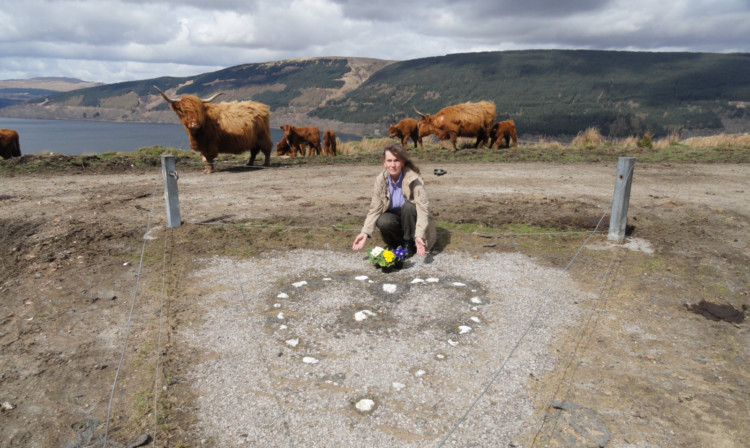Author and storyteller Jess Smith wants action to ensure that a site sacred to the Travelling community is saved for future generations.
She has launched an online petition urging the Scottish Government to ask Historic Scotland to investigate the action that can be taken to ensure the restoration and preservation of the Heart of Quartz stones, which overlook Loch Fyne.
Known as the Gypsy wedding place, and referred to locally as the Tinkers’ Heart, the site is of enormous significance to Travellers.
“It is the only monument that Scottish Travellers have, indicating their timeline and presence in Scotland,” said Crieff-based Jess, who through her books has told the story of the Travelling community she was brought up in.
“Excluded by church and state, these ancient people have visited the heart to marry and Christen babies for centuries.
“The site was still used for Tinkers’ weddings as late as 1978 and it seems that its importance as a place of beginnings is still understood today by couples who visit the heart on their wedding day.
“It is also a sacred place to remember the dead, evident by the coins and flowers that lie scattered at the heart. Some people still visit to pay respect and honour their ancestors.”
How long the heart has been in Argyll is not known but stories suggest that Tinkers from the area who fought and did not return from the Battle of Culloden in 1745 were remembered by their families in the ancient practice of laying a quartz stone for each one lost, forming the heart shape.
The petition says that in 1928 the nearby road was resurfaced by workmen from the local council, who covered the heart.
Both Tinkers and landowners objected to this action and Lady George Campbell insisted that the tar be removed from the site.
Not only was the heart restored, the episode showed its importance to both a distinct Scottish cultural group and to the gentry.
The layout of the road was changed in the 1970s and the main road was realigned, leaving the heart in a field instead of at the junction of the roads.
In 2008 the council drew up plans for restoration work and money was allocated to the project. However, residents considered that the £34,500 cost was too much and promised to take care of the area. A fence was erected but this has been damaged.
“There are now cattle feeding and tramping on the heart, leading to its destruction, thus prompting this petition for the restoration and listing of this historical place,” said Jess.
“The Tinkers’ Heart is not a huge site in physical terms, but in terms of love, of memory and of sacred significance, it is a site of enormous proportions and cultural, historical and religious significance.
“The Travelling people who have lived and contributed to Scottish culture for centuries have only this little place as proof of our existence.
“The demise of traditional Gypsies and Travellers in Scotland has long been predicted. It would be tragic if the nomadic history of my people, who have helped colour the culture of Scotland, should end in such a way without a little spot being scheduled and listed as our place.”
The closing date for the petition is May 28 and it can be accessed at www.scottish.parliament.uk/GettingInvolved/Petitions/PE01523.
